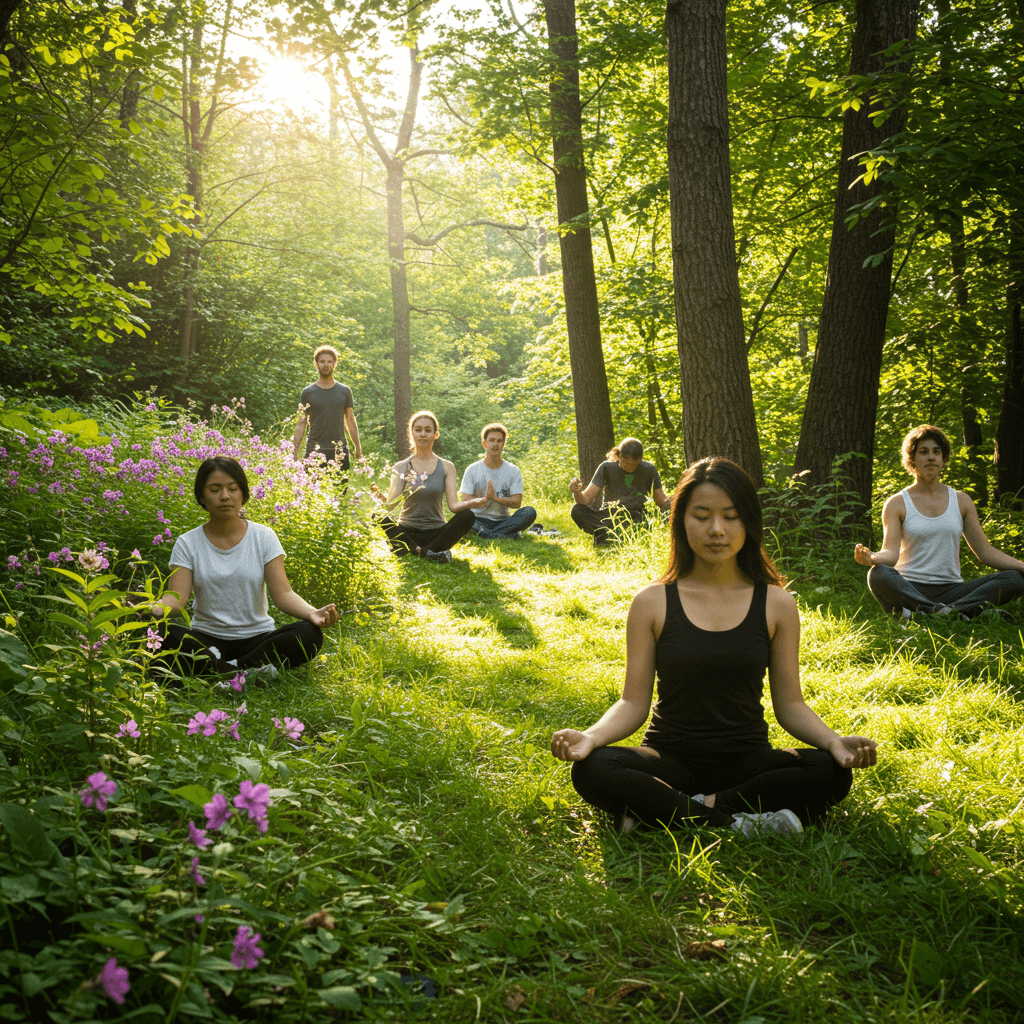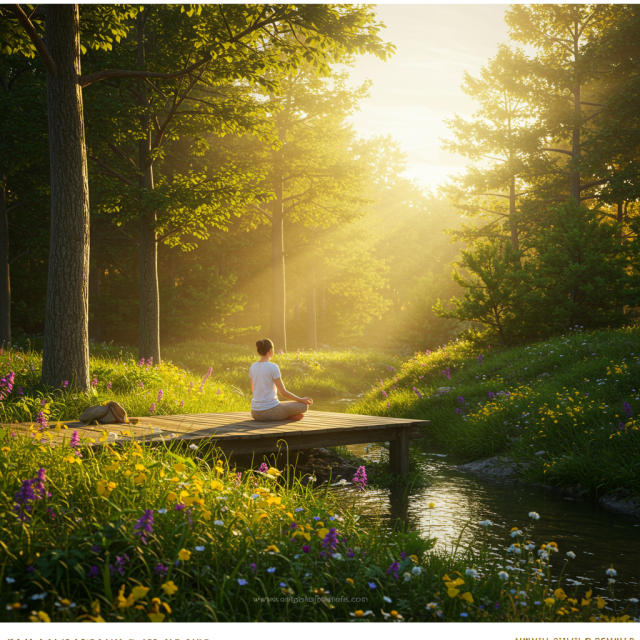In our fast-paced, hyperconnected world, it’s easy to feel disconnected from ourselves and the natural rhythms that sustain us. Ecotherapy, also known as nature therapy, invites you to step outside modern stressors and immerse yourself in the healing embrace of the natural environment. By engaging your senses, calming your mind, and grounding your energy, ecotherapy practices offer a transformative pathway toward enhanced wellness and personal growth. In this guide, we’ll explore eight powerful ecotherapy activities—from forest bathing to community conservation—that will help you cultivate resilience, foster clarity, and reignite your sense of wonder.
What Is Ecotherapy?

Ecotherapy is a holistic approach to mental and physical wellbeing that leverages nature-based experiences to support healing, self-discovery, and growth. Rooted in environmental psychology, traditional medicine, and indigenous practices, ecotherapy recognizes the deep, restorative connection between humans and the natural world. Unlike conventional talk therapy, ecotherapy encourages you to engage directly with natural landscapes—whether that’s a quiet forest, a sandy beach, or a community garden—to awaken your senses, heighten mindfulness, and nurture emotional balance.
Core Benefits of Ecotherapy
- Stress Reduction: Time in nature lowers cortisol levels and activates the parasympathetic nervous system, promoting relaxation.
- Improved Mood: Natural settings increase serotonin and endorphin release, boosting happiness and reducing symptoms of anxiety and depression.
- Enhanced Creativity & Focus: Sensory engagement with the outdoors invigorates the mind, improving problem-solving skills and creative thinking.
- Heightened Resilience: Regular nature interactions foster adaptability and emotional regulation in the face of life’s challenges.
- Stronger Sense of Belonging: Cultivating a relationship with nature nurtures feelings of interconnectedness and purpose.
1. Forest Bathing (Shinrin-Yoku)
Originating in Japan, Shinrin-Yoku—or forest bathing—is the practice of mindfully wandering through a forest at a leisurely pace, soaking in the sights, sounds, and scents. Unlike hiking or trekking, forest bathing emphasizes slow movement and deep sensory awareness. To begin, find a safe, wooded area and leave devices behind. As you walk, notice the texture of bark under your fingertips, listen for birdsong, and inhale the earthy perfume of moss and pine. Spend at least 20–30 minutes in the space, allowing the forest’s calming energy to restore your system.
2. Nature Journaling

Bringing a journal outdoors is a powerful way to deepen your connection with the environment and your inner self. Find a comfortable spot—whether beneath a sprawling oak or beside a babbling creek—and spend time observing your surroundings. Sketch the shapes of leaves, document bird calls, or simply describe the sensations you experience. Reflecting on your observations over time helps you notice subtle changes in nature and in your own emotional landscape, fostering a sense of presence and appreciation.
3. Mindful Movement in Natural Settings
Combining movement disciplines such as yoga, tai chi, or qigong with the great outdoors amplifies their benefits. Choose a quiet meadow, beach, or garden space to practice slow, deliberate movements. Synchronize each posture or gesture with your breath, letting the natural environment guide your flow. Feel the grass beneath your feet, sense the breeze against your skin, and listen to ambient sounds as you move. This integration of body, breath, and nature elevates physical vitality and mental clarity.
4. Gardening for Grounding
Tending to plants offers both physical and emotional rewards. Whether you cultivate a raised-bed vegetable plot or nurture potted herbs on your balcony, gardening connects you with the cycles of growth and renewal. Engage your hands in the soil, plant seeds, weed thoughtfully, and watch life unfold. The repetitive, mindful actions involved in gardening promote stress relief, boost mood, and engender a sense of accomplishment as you witness the fruits—literally—of your labor.
5. Natural Sound Immersion
Our brains thrive on natural soundscapes—birdsong, rustling leaves, flowing water, and wind whispering through trees. Seek out environments rich in these auditory cues and spend dedicated time simply listening. Close your eyes, tune in to each layer of sound, and let it wash over you. Apps and recordings can be helpful, but live experiences in parks, forests, or near waterways offer a deeper, more dynamic connection to the living landscape.
6. Breathwork & Meditation Under Open Skies
Combining intentional breathwork with outdoor meditation amplifies relaxation and mental clarity. Find a quiet spot—this could be a mountaintop at dawn, a sandy shore at sunset, or even your backyard lawn. Begin with diaphragmatic breathing: inhale deeply through your nose, expanding your belly, then exhale fully. As you establish a steady rhythm, incorporate meditation techniques such as body scans or mantra repetition. The open sky above and earth beneath you create a powerful container for releasing stress and cultivating inner stillness.
7. Nature-Based Creative Expression
Harness your artistic impulses by creating art directly inspired by nature. Land art—using sticks, stones, leaves, and flowers to compose ephemeral installations—or outdoor watercolor painting sessions can help you tap into intuitive creativity. The process is more important than the result: embrace impermanence, stay present, and allow natural materials to guide your expression. This form of creative play sparks joy, invites wonder, and strengthens your bond with the environment.
8. Community Conservation Engagement
Participating in local environmental conservation or restoration projects deepens social connections and promotes collective well-being. Volunteer for beach cleanups, tree-planting events, or wildlife habitat restoration initiatives in your area. Working alongside like-minded individuals fosters a sense of community, purpose, and mutual support. Moreover, contributing to ecosystem health has a ripple effect on personal growth—knowing that your efforts preserve natural beauty and biodiversity can be profoundly empowering.
Conclusion & Next Steps
Ecotherapy offers a versatile toolkit for anyone seeking to elevate their wellness and growth through nature’s inherent wisdom. By integrating practices like forest bathing, mindful movement, creative expression, and community engagement, you can craft a personalized ecotherapy routine that nourishes body, mind, and spirit. Start small—commit to one or two activities per week—and gradually build momentum. As you deepen your relationship with the natural world, you’ll uncover newfound resilience, clarity, and joy. Embrace nature’s prescription and let the outdoors guide your journey toward holistic well-being.
Looking to live more intentionally? Explore our guide to Wellness & Growth through mindful habits and self-care.









